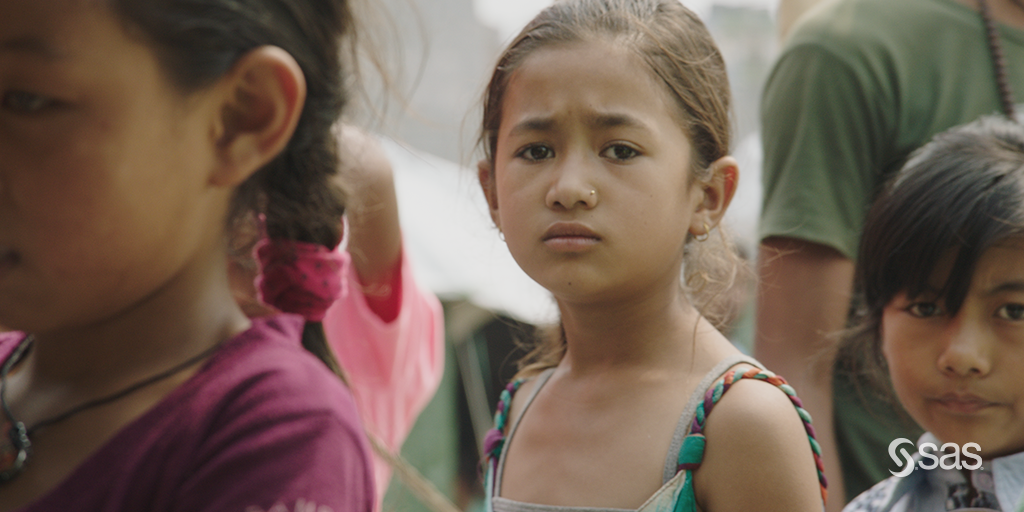Population movement is higher than ever. Buoyed by freedom of movement and critical events such as armed conflict and the European migrant issue, large groups of people are migrating across borders.
In fact, population movement has now reached record levels. There are currently more displaced people globally than during the whole of the Second World War.
Why is population migration coming to a head now, and how can we address some of the problems associated with it?
I recently attended the Oxford Humanitarian Innovation Conference 2015, where population migration was one of the key issues discussed. At the conference, I was invited to sit on a panel to discuss how technology innovation can help in disaster relief efforts. Disasters often precipitate large movements of people.
It is clear to me that there are things that can be done to tackle today’s humanitarian relief problems that have not been universally done before, primarily around the use of big data and analytics.
Being able to understand and visualize what’s happening at any given time is key to disaster relief. First responders and relief workers need technology to better track events in real time, spot trends and allocate resources in the most efficient way possible. Since many of these workers have not had the deep statistical training required to make sense of humungous data sets, a simple, easy-to-use interface is essential.
Using visualisation to prevent disasters
Visual analytics solutions, for example, can quickly spot unusual trends and therefore predict issues before they emerge. These tools are perfect for humanitarian purposes so that organisations can get the right resources to the right areas before it’s too late. This can ensure more time, money and resources are dedicated to helping people in most need, and less is lost to logistics, research and planning.
A great example of this is our work with the International Organization for Migration (IOM). SAS helped IOM following Typhoon Haiyan in the Philippines – using SAS Visual Analytics, IOM can see where the high-risk shelters are. For example, it was found that there were higher concentrations of diarrhea, fever and skin disease among older people, so specific medication required to tackle those diseases could be sent to the right locations.
It’s not just data collected in real time that can prove crucial to humanitarian efforts. For example, UN COMTRADE, which gives access to more than 300 million rows of detailed, global UN trade data dating back to 1988, is an incredible data resource.
Having the right technology to gather insights from this data is a vital step forwards, so we worked on providing UN COMTRADE Insights software. Users can get access to the data for as little as $25. Yet, it could be highly valuable for any organisation needing quick answers buried in all this trade data.
UN COMTRADE data was key in helping relief efforts following the Nepal earthquake. For example, the IOM used it to help with the building of temporary shelters for displaced people. The data allowed the IOM to understand where and how to quickly procure sheet metal roofing before monsoon season, which saved the organisation masses of critical time that would otherwise have been spent researching via other means.
Tracking population changes with mobile data
These examples show how the insights garnered from data can be valuable in solving humanitarian crises. For countries currently handling a population influx, one of the biggest problems is verifying where people have been displaced from without any official ID or documentation.
However, tracking cell phone usage can help identify where they’re from. Using this data, it may also be possible to track both legitimate population shifts and unofficial movements engineered by people traffickers, for example, which could be a vital piece of the puzzle when tackling growing population challenges.
Ultimately, one of the key takeaways from the conference was that the current model for providing humanitarian relief is broken. The world’s mentality is still focused on short-term fixes. Just setting aside lots of money to help with relief is not enough. With more disasters and conflicts across the world, more people are being displaced than ever before.
Organisations across the globe can make much better use of the technology and innovation available today. They can extract insights, key trends and meaning from available data to provide faster relief and help staff on the ground to solve problems. This is the foundation to building a new humanitarian model that is more suited to addressing the challenges of today before they escalate into a crisis.
Find out more about using and deploying data visualisation technology.

